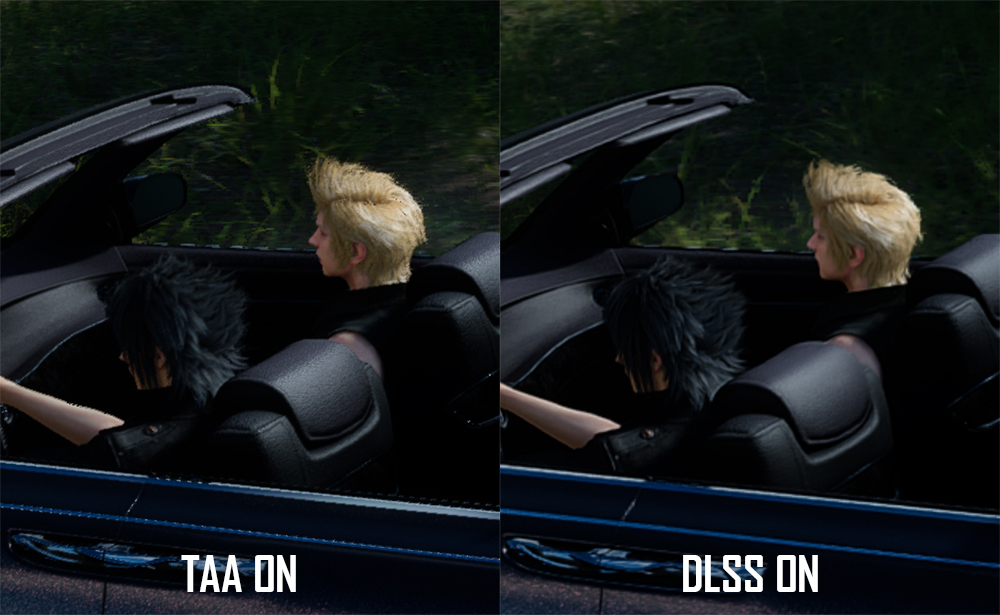However, since the training data is 64x supersampling in this case, the 2K frame with upscaling at 4K may look better than the natively calculated 4K frame. Training is a crucial factor that ultimately contributes to the best possible result. The more training, the better the algorithm.
...
A comparison is of course still difficult. We've set the bitrate for the recording to the maximum, but YouTube provides the videos at a lower bitrate. From personal experience we can say that the presentation between TAA and DLSS hardly differs. Final Fantasy XV shows a flickering of the grass when the DLSS is active, but the TAA filter often blurs a few details. Unfortunately, the benchmark of FFXV does not always run the same and therefore the timecode drifts further and further apart.
We would like to emphasize once again that only DLSS 1x is currently active. This is the variant that renders with a lower resolution and then performs an upscaling.



